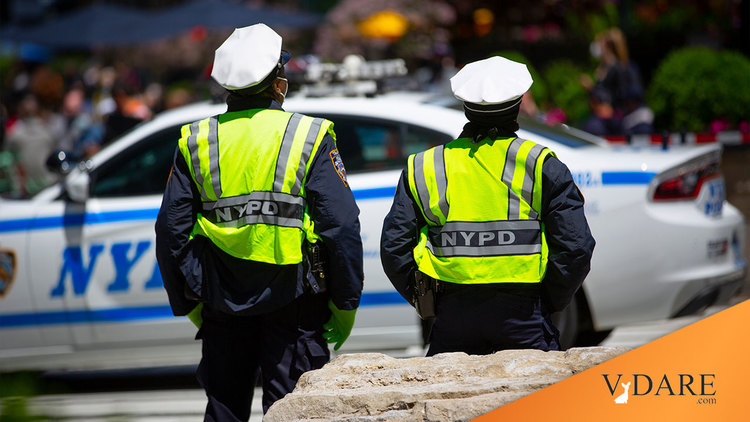From Commentary:
Did Black Lives Matter Save Black Lives?
The data say no
by Wilfred Reilly, Robert Maranto and Patrick Wolf
… According to Jason Johnson, researcher and president of the Law Enforcement Legal Defense Fund …
Johnson attributes (as we do) rising crime to the BLM-affiliated Defund the Police and Police Pullback movements, noting that deadly violence in America’s major cities rose “as engaged policing fell.” Cities that slashed policing budgets, says Johnson, “often saw the largest drop in active policing and…increases in homicide.” The data largely support this position: The homicide surge in New York City, in particular, followed a decrease in police stops and a remarkable 38 percent decline in officer-initiated arrests. From June to December 2020, the NYPD logged 45,000 fewer arrests than it had from June to December 2019.
The same was true in other major metropolitan areas. In Chicago, arrests declined by 53 percent, an even steeper drop than in New York, while in the Kentucky metroplex of Louisville, police stops declined by 35 percent and arrests dropped by 42 percent. The pattern here is not novel. During an earlier wave of BLM activism, a memorable 2016 headline on the Chicago page of the DNAinfo news site read: “Police Stops Down by 90 Percent as Gun Violence Skyrockets.”
The article goes on to look at what good police departments do, with the NYPD of course standing out both for not letting civilians shoot each other much while the NYPD doesn’t shoot civilians often either:
What accounts for high-quality urban policing? Distinct trackable variables, which curious people can readily measure. While it might seem obvious, most departments that perform well in terms of not shooting civilians dedicate time and energy to teaching nonlethal combat and the use of nonlethal weapons such as tasers. In New York City—in what appears to be a largely untold success story—this was the primary policy responsible for a 90 percent reduction in annual civilian death numbers over the past 50 years.
Also, changing the culture to get illegal handguns off the street means cops are going to get in shootouts a lot less.
Most high-quality police departments also tend to get very good at tracking data in real time, using tools such as COMPSTAT to observe when and where crimes happen, and then sending action-ready officers directly into these identified “hot zones.”
On an individual-department basis, specifically designated powers also help a given leadership team improve policing. NYPD commissioners, in particular, have long had an unusual level of internal power that almost any boss would envy. This includes the ability to fire any precinct commander for unsatisfactory performance, bust down in rank any unsatisfactory commander and thus dramatically reduce his or her retirement pension. In other words, any commissioner can force recalcitrant or holdover members of departmental middle and upper management out of their jobs and then hand-pick all their replacements. This power has not, historically, gone unused. During just two turbulent years in the 1990s, legendary New York City Commissioner William Bratton fired or “retired” almost 66 percent of his commanders, allowing a complete makeover of departmental culture.
Another factor in good policing is the presence of a professional internal-affairs unit to investigate police misconduct, as chronicled by the NYPD’s long-time Internal Affairs Bureau Director Charles Campisi in his Blue on Blue.
Obviously, being able to tax Wall Street does the NYPD a lot of good. But still, New Yorkers tend to have what Tom Wolfe called Big Timer syndrome, which can be a good thing. The New York culture encourages people to use what brains they have.
E.g., the best cabdriver I ever had was this African-American in 1984 who had timed every stoplight in Manhattan. He said he had determined that he had to drive 36.2 mph down Third Avenue to make every light, and he did, well over 100 in a row. He got me from Midtown to La Guardia in 18 minutes. While he was doing this, he had me quiz him on random addresses around Manhattan and got them all right.
A Big Time taxi driver!
So, imitating what the NYPD does might be good for small time police departments.
[Comment at Unz.com]













